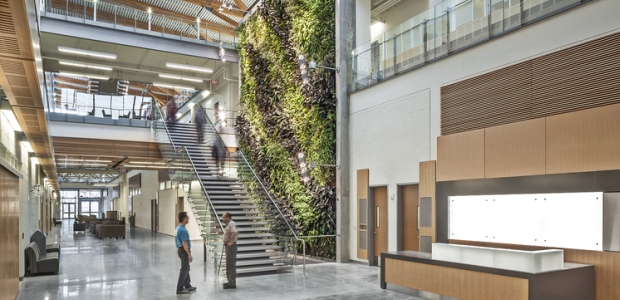
Green Building and Sustainability
Increased awareness of not only the value, but the necessity of adopting green building initiatives in new builds and retrofits is critical.
- By Jack Laken
- Apr 01, 2017
Our climate is changing. A shift in the number of wildfires, tsunamis, earthquakes, droughts, and heavy rainfalls has been attributed to climate change. These changes have had an impact on agriculture and wildlife, including the introduction of new pests and depleting habitats.
Humans and our current life style practices remain the leading contributors to climate change, with carbon being the main culprit.
The Impact of Carbon
According to Architecture 2030, nine hundred billion square feet of buildings will be newly constructed or renovated by 2030. Buildings are one of the leading contributors to carbon emission, mainly from their use of fossil fuels during operations. In fact, cities and urban areas are responsible for approximately 75 percent of carbon emissions. If these buildings continue to be developed and run in the traditional manner, the environmental damage will only progress.
Thankfully, with an increased focus on the hazards that buildings emit into the atmosphere, companies are starting to consider adopting greener initiatives. Cities worldwide are investing in climate action plans with the goal of reducing their environmental footprint. This includes "Smart City" initiatives to better manage existing infrastructure, zero waste policies, alternative energy sources, and researching the potential of developing net zero buildings.
Resource Efficient
Integrating sustainable resources that are long lasting is key to ensuring that a structure is fully sustainable. Products such as reclaimed wood, recycled plastic or glass, as well as energy-efficient, locally sourced materials such as concrete that naturally contains a high thermal mass, will ensure that the building is resource efficient.
Net Zero as a Solution
Net zero, however, for several companies and homeowners, still feels largely unattainable. Cost, restricting policies and procedures, and limited information often create roadblocks for making these energy-neutral buildings a reality. To be able to create these buildings, end users and investors need to both understand and value the chosen solution. This includes investing in energy-efficient solutions and advocating for standards that are environmentally responsible while being cost effective at the same time.
So what does it mean to be environmentally responsible? Creating an environmentally responsible building begins with an understanding of the current systems that negatively impact the environment, such as heating and cooling, and finding alternatives that will decrease the impact. This includes looking at both the site and size of the structure to reduce the amount of resources used. The key is to minimize the overall impact on the environment. Once the site is determined, architects and builders need to look at how the structure of the building can insulate (keep energy in), while also integrating solutions that will store any excess heat in the winter and that will pre-cool the structure in summer during the night.
A net zero building needs to produce as much energy as it consumes. This requires some outside-of-the-box thinking and the integration of a variety of solutions that seamlessly work together for a healthier environment. Because heating and cooling are two of the main sources of carbon, it makes sense to begin by looking at systems that will reduce the use of HVAC systems.
One project that did exactly this was the Ed Lumley Centre for Engineering Innovation at the University of Windsor campus. With a desire for cleaner air, this project included the installation of a bio wall. This wall, which includes 1,500 plants, naturally filters the carbon dioxide in the air and then transfers its freshness to the entire building. This building also boasts glass and solar systems, a green roof that collects and filters rain water, and hollow core slabs to both harness and store energy and in turn decrease the use of traditional HVAC systems.
Green buildings are not about implementing one solution alone; instead, the architects and engineers need to work in collaboration to find solutions that will lessen the carbon footprint. Each aspect of the building needs to be considered, from the insulation to how energy will be harnessed, stored, and released.
Developing a Foundation for Net Positive
Increased awareness of not only the value, but the necessity of adopting green building initiatives in new builds and retrofits is critical. All those involved in the green building industry, including builders, engineers, and architects, play a vital role in helping to shift thinking at both the industry and consumer levels. This includes educating and advocating for the adoption of solutions that will have a positive impact: green solutions that will pave the way to a net positive tomorrow.
This article originally appeared in the April 2017 issue of Occupational Health & Safety.